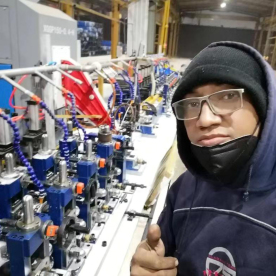[High-Speed Flying Saw Machine]Revolutionizing Manufacturing: The Advent of High-Speed Flying Saw Machines in Industrial Applications
News 2024-9-5
In today’s fast-paced industrial world, efficiency and precision are paramount. Manufacturers seek innovative solutions to enhance their production capabilities while maintaining high quality standards. One such transformative advancement in cutting technology is the High-Speed Flying Saw Machine. This cutting-edge equipment has revolutionized the way materials, especially metals and composites, are cut and managed in various industries. Understanding the workings, benefits, and applications of this remarkable machine is essential for businesses aiming to stay ahead in a competitive market.

Revolutionizing Manufacturing: The Advent of High-Speed Flying Saw Machines in Industrial Applications
One of the most significant advantages of the High-Speed Flying Saw Machine is its ability to reduce cutting time dramatically. Utilizing high RPM (revolutions per minute) blades allows for faster material removal, significantly decreasing production cycles. This efficiency is crucial in manufacturing settings where time is money. For instance, in industries such as automotive or aerospace, where precision and speed are indispensable, the adoption of flying saw technology can lead to substantial cost savings and improved output.
Moreover, the High-Speed Flying Saw Machine minimizes material waste, a critical aspect of modern manufacturing goals. Traditional cutting methods often produce excess scrap material, but the precision and speed of flying saws optimize material use. By making cleaner cuts with less kerf (the width of material removed during cutting), manufacturers not only save on raw material costs but also contribute to more sustainable production processes.
Another key benefit of the High-Speed Flying Saw Machine is its versatility. This equipment can cut various materials, including ferrous and non-ferrous metals, plastics, and composite materials, making it an invaluable asset across multiple industries. From fabricating metal components for machinery to creating intricate parts in the electronics sector, its adaptability ensures that manufacturers can utilize it in a wide range of applications.
The landscape of manufacturing is continually evolving, with technological advancements shaping the future of production processes. Companies that embrace innovative solutions like High-Speed Flying Saw Machines are often better positioned to meet the demands of modern consumers. The push for quicker turnaround times and higher-quality products means that businesses must invest in technologies that enhance their capabilities.
Incorporating a High-Speed Flying Saw Machine into a production line can also streamline labor requirements. By automating the cutting process, companies can reduce the dependency on manual labor for repetitive and time-consuming tasks, allowing workers to focus on more skilled operations. This not only increases productivity but can also enhance workforce morale by allocating human resources to more engaging tasks.

Revolutionizing Manufacturing: The Advent of High-Speed Flying Saw Machines in Industrial Applications

